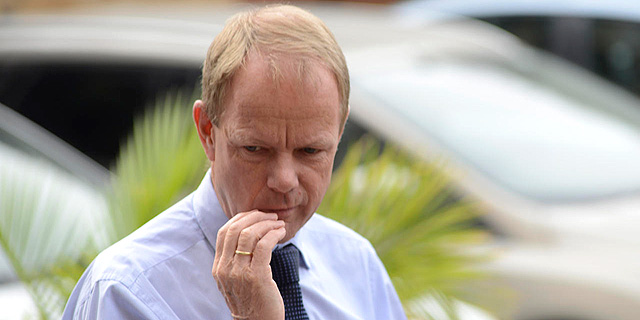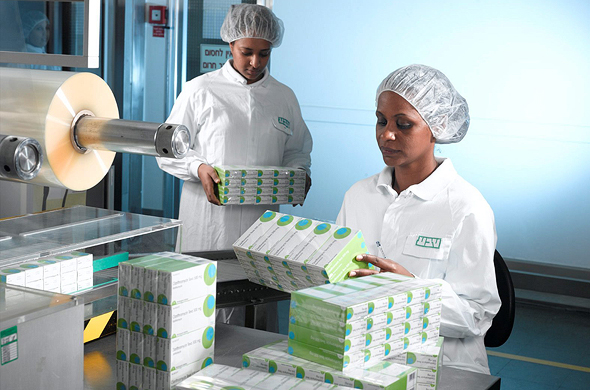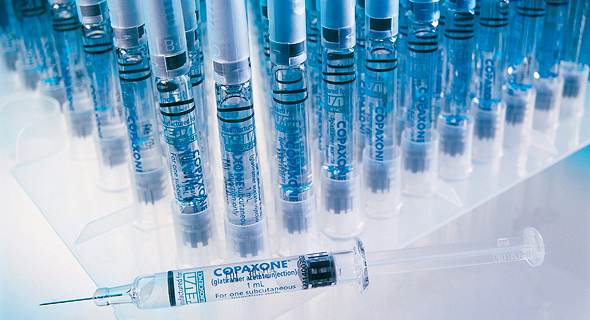
Analysis
Rivals' Earning Reports Should Have Teva's Shareholders Worried
Teva’s leadership will break its self-imposed silence on Wednesday, when the company publishes its second-quarter report for 2019
At the end of the first quarter, Amgen held 60% of the migraine market, Teva held 23%, and Eli Lilly held 17%. However, when it came to new prescriptions, Amgen held 40%, while the other two held 30% each. According to Amgen's reports, its sales increased from $59 million in the first quarter to $83 million in the second, mostly thanks to an increase in paid prescriptions from 60% in January-March to 74% in the second quarter. Eli Lilly saw its sales increase from $12 million in the first quarter to $34 million in the second. Data presented by Eli Lilly showed that its market share increased to 40%, Amgen's market share remained at 40%, and Teva's dropped to 20%. Presumably, Teva is facing a similar situation in Europe.
Ajovy's sales amounted to $20 million in the U.S. in the first quarter of 2019. A combination of factors—the growth of the entire market, an increase in paying users, the relative stability of Teva's market share overall, and a decrease in the new prescription market share—should see Teva's sales rise to around $36 million for the second quarter. The good news for Teva is that the U.S. sales of all three drugs combined are expected to grow from $91 million in the first quarter to $153 million in the second quarter, and that it is plausible that Teva could achieve its previously declared annual forecast—$150 million. The bad news is that Teva's share of the pie is limited.
In the company's call with analysts, Schultz is expected to face questions about Teva's decrease in new prescriptions, and about its strategy for increasing its migraine treatment market share. For Austedo, the main market potential is in treating tardive dyskinesia, a condition estimated to affect 500,000 people in the U.S. alone. Teva reported sales of $74 million in the first-quarter and forecasted annual sales of $350 million for 2019. Over the past two quarters, the rate at which Austedo's sales have grown has slowed down, and the figures for the second quarter of 2019 will provide an indication for the growth rate that can be expected for sales in the future. Teva's main rival in the market is Neurocrine Biosciences Inc. and its drug Ingrezza, which saw its sales boosted from $136 million in the first quarter to $180 million in the second. While the jump has been attributed to seasonal fluctuation and traditionally stronger sales in the second and fourth quarters, even putting seasonality aside, it seems Ingrezza has established itself as the leading drug for tardive dyskinesia, necessarily limit Austedo's growth potential. Teva's Copaxone sales continue to diminish, reaching $335 million in the first quarter of 2019 compared to $494 million and $601 million in the fourth and third quarter of 2018, respectively. The drop is expected to halt in the second quarter of 2019, due to the seasonality effect of contracts being renewed at the beginning of the calendar year, which caused Teva to lose customers to generic rivals and to lower prices in the first quarter. While forward-looking supply cuts also affected Teva's results for the fourth quarter of 2018, sales are expected to be more stable for the second and third quarters of 2019. The drop in sales is expected to resume in the fourth quarter of 2019, and it is unlikely that Teva will see sales of over $1 billion for 2020. The rest of Teva's brand drugs, of which the most significant ones are cancer treatment drug Bendeka and respiratory treatments ProAir and QVAR, are expected to show gradual drops as competition increases. Teva is expected to discuss its sales in its upcoming reports. Teva's generic business Generic drugs make up most of Teva's business, especially in the U.S. and Europe. Profitability is dependent on the launch of new products with a generic drug exclusivity, and on market conditions in the U.S. and Europe. The second quarter is expected to be relatively weak due to a lack of new U.S. launches and lower seasonality in Europe. As most of Teva's valuation is based on its generic business, its results for this segment and its forecasts will have a significant impact on its stock. Legal troubles and debt Teva's forecast put its operating profit for 2019 at $3.8 billion to $4.2 billion. This profitability needs to carry an enormous debt, and any slight deviation from the forecast could greatly impact Teva's valuation. Existing data shows that an upswing in Teva's stock valuation is unlikely, so even a reiteration of the current forecast is good news for shareholders. Teva's management has so far refrained from supplying clear answers about the risk posed to the company from lawsuits filed against it, but will now likely be pressed to provide better answers about the legal risk and its defense strategy. At the end of the first quarter of 2019, Teva reported cash and cash equivalents worth $1.973 billion, against a gross debt of $28.82 billion and a net debt of $26.65 billion. In July, Teva repaid $1.57 billion worth of bonds, leaving it with $400 million of cash and cash equivalents and very diminished liquidity. Teva will need to pay bondholders $2.56 billion and $4.2 billion in 2020 and 2021, respectively, but its cash flow will not be enough, and if it's bond yield remains high it will struggle to repay its debt. Teva has a $3.2 billion credit line from a group of banks, but to receive it the company will need to meet financial terms it will struggle with, namely a debt/EBITDA ratio of 3.5 by 2024. Possible solutions are additional asset divestment or raising funding from the public or a strategic investor, meaning Teva will have to provide answers not just to concerned shareholders but to concerned bondholders as well. Teva still has good assets. Its generic business is profitable, in large thanks to Schultz's reorganization plan, and the sales of Ajovy and Austedo are growing, though too slowly to make up for the decrease in Copaxone sales. Its brand drugs, mainly Copaxone, Bendeka, and its respiratory products, are expected to bring in a lot of cash in the short-term but that flow will dry up in the near future. Against these assets are Teva's enormous debt and the legal threats it faces, which combined with its low liquidity leave Teva fighting for its survival, and Schultz with fewer and fewer cards to play as time goes on. Teva management's silence despite the crash of its stock and bonds is only increasing market concerns, and on Wednesday Schultz will have no choice but to face the company's troubles publicly, as these are crucial days for Teva's future. The Mylan-Pfizer merger is a sign of distress Teva is not the only company floundering. Mylan and Pfizer have recently joined forces due to market competition. Mylan, one of Teva's main rivals in the generic drug market, has in recent years promised shareholders growth based on complex generics, among others for Copaxone and GSK's Advair, as well as biosimilars. Despite receiving FDA approval for generic Copaxone and Advair and European approval for several leading biosimilars, Mylan has in recent years seen its sales growth halted, its profitability impacted negatively, and its acquisition-based financial leveraging damage both its flexibility and valuation. The two legal issues Teva is facing in the U.S. are also affecting Mylan and its stock, though Mylan is not as impacted by opioid-related lawsuits. Pfizer has meanwhile transferred the business of 20 of its leading drugs, the patents of which are either expired or about to expire in the U.S., into its wholly owned subsidiary Upjohn. Upjohn is trying to make the most of those drugs through geographical expansion, mostly to China and other emerging markets. As a result of this successful strategy Upjohn is highly profitable, but the second-quarter reports have shown that profitability is beginning to decrease, partly due to a change in the way tenders are now held in China, and it is expected to be further impacted by the new generic competition in the U.S. for its drug Lyrica. Upjohn's EBITDA is expected to go from $3.8 billion in January-June 2019 to $2.3 billion in July-December, mostly due to generic competition, and to drop below $4 billion in 2020. The Mylan-Pfizer merger will result in a new company composed of Upjohn and all of Mylan's operations. Upjohn will raise a debt of $12 billion, which will be Pfizer's first contribution according to the agreement. Pfizer will own a 57% in the joint company, while Mylan will receive a 43% stake in a company with a financial debt of $24.5 billion. Both Mylan and Pfizer are hyping the merger, partly because Upjohn's debt terms will be determined by shareholder optimism regarding the new entity. It can be seen as a merger between the struggling Mylan and the soon-to-be-diminishing Upjohn, with the addition of a very large debt. Separating from its weakening business will enable Pfizer to show high growth for its core businesses. Mylan and Pfizer estimate that the merged entity will have revenues of $19 billion to $20 billion in 2020, 60% of them thanks to Upjohn, with an EBITDA of $7.5 billion to $8 billion and cash flow of $4 billion. Over half the EBITDA is expected to come from Upjohn due to its high profitability. The companies estimate that the merged company's flow will remain stable for a few years, with the synergy achieved as a result of the merger counter-balancing the expected drop in Upjohn's sales. Mylan initially saw its stock jumped by 13.5% following the announcement, but some of that hype has since worn off. Pfizer lost 10% of its valuation since, as the divestment of Upjohn led to the company releasing a weak forecast. Mylan's current market cap is $10.2 billion, giving the merged entity a valuation of $23.7 billion. There is a reason Pfizer chose Mylan for the merger and not Teva, whose debt would've made additional debt financing hard to raise. Teva is also more exposed to legal risk from the opioid and drug cartel lawsuits due to the larger scale of its operations. In its post-merger conference call, Mylan forecasted that in terms of numbers, its generic U.S. sales in 2020 are expected to be similar to 2019, but as drug prices are expected to drop by 5%-10%, its revenues are also expected to drop. Though that forecast will probably change several times in upcoming months, it is a pessimistic forecast for shareholders, who expected the generic drug market to recover in 2020. While the merger will not necessarily have a huge impact on the global generic drug market, it is a lifeboat for Mylan, which will receive a highly profitable business that will in the short-term better its debt/EBITDA ratio. In the long-term, it will see Mylan cede control to Pfizer. Additionally, Upjohn's business is doubly risky due to the possibility of generic competition for those drugs that are no longer patent-protected, and from regulation that could impact prices, especially in China. The U.S.-China trade war can also have a negative impact. All in all, Upjohn's contribution to the merged entity will probably drop from year to year. Pfizer has so far avoided saying what it intends to do with its stake, and it is unlikely the company will sell it before the merger is complete. However, the company could later choose to sell it to complete its separation from Upjohn, and if so, the merger could turn out to be just a financial move for Pfizer.

No Comments Add Comment